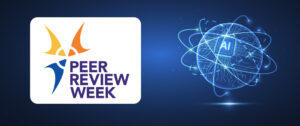When working with people with aphasia and related disorders, the latest clinically relevant research can be key to achieving better outcomes. For more than 50 years, the Clinical Aphasiology Conference (CAC) has been a venue for practitioners and researchers to share information and advance the sciences. As we have in the past, we’re bringing you highlights of the 52nd CAC in the latest Special Issue of the American Journal of Speech-Language Pathology (AJSLP).
Select Papers From the 52nd CAC
Michael de Riesthal guest edited this year’s issue. At 18 articles, this is the largest clinically focused issue on aphasia and other acquired neurologic language disorders ever published in AJSLP!
Articles in the special issue cover topics such as handwritten and typed discourse in aphasia, listening in background noise, and reading comprehension and literacy. A number of articles focus on quality-of-life issues for people with aphasia, such as the importance of communication partner training and how people with aphasia seek mental health care.
Whether you’re looking for solutions to help individuals who have Wernicke’s aphasia or you’re seeing clients with nonfluent aphasia, this issue of AJSLP contains clinical research you can use. With research from dozens of authors on topics as diverse as using patient self-feedback and direct current stimulation, this issue will help you incorporate evidence-based practice into your work!
More Aphasia Research for Clinicians
Every year, ASHA’s journals publish dozens of articles on aphasia, including more than 100 articles since 2023 alone! If you’re looking to bring more evidence-based practice into your work, AJSLP is one of ASHA’s clinically focused journals, offering translational research on dozens of topics for ASHA’s speech-language pathologists (SLPs). If you’d like to read more practice-based articles on aphasia, check out our previous CAC coverage below.
We’d like to thank Dr. de Riesthal for bringing information from this conference to ASHA’s clinicians. You can read the entire issue online, or explore the individual articles below!
Previous CAC Coverage
AJSLP Special Issue Highlights the 48th Annual Clinical Aphasiology Conference
AJSLP Special Issue Highlights the 49th Clinical Aphasiology Conference
The Latest on Clinical Aphasiology in AJSLP
Highlights From the 50th Clinical Aphasiology Conference
Clinical Aphasia Resources: Highlights From the 51st Clinical Aphasiology Conference
Explore the Special Issue
Boukrina, O., Madden, E. B., Giordano, N., Karim, D., Staples, R., & Graves, W. W. (2024). Targeting phonology or semantics to improve reading aloud response times and accuracy: A case series investigation of stroke survivors with aphasia. American Journal of Speech-Language Pathology, 33(5S), 3263–3295. https://doi.org/10.1044/2024_AJSLP-23-00364
Dawson, N., Bislick, L., & Suarez, L. (2024). The current state of the literature on dual-task performance across multiple domains in individuals with chronic poststroke aphasia: A scoping review. American Journal of Speech-Language Pathology, 33(5S), 3444–3467. https://doi.org/10.1044/2024_AJSLP-23-00352
El Ouardi, L., & Yeou, M. (2024). Are personal and reflexive pronouns dissociated in agrammatic comprehension? An individual participant meta-analysis with clinical implications. American Journal of Speech-Language Pathology, 33(5S), 3218–3235. https://doi.org/10.1044/2024_AJSLP-23-00343
Harmon, T. G., Hegewald, R., & Dromey, C. (2024). “Competing noises”: How background noise impacts the communication experiences of people with mild-to-moderate aphasia. American Journal of Speech-Language Pathology, 33(5S), 3393–3409. https://doi.org/10.1044/2024_AJSLP-23-00354
Imaezue, G. C., Tchernichovski, O., & Goral, M. (2024). Self-improved language production in nonfluent aphasia through automated recursive self-feedback. American Journal of Speech-Language Pathology, 33(5S), 3343–3357. https://doi.org/10.1044/2024_AJSLP-23-00320
Kelleher, K., Obermeyer, J., Crutchley, S., Stalker, S., Silverman, M., & Morrow-Odom, K. L. (2024). Knowledge, beliefs, and experiences with mental health services and help-seeking in people with aphasia and care partners. American Journal of Speech-Language Pathology, 33(5S), 3315–3342. https://doi.org/10.1044/2024_AJSLP-23-00365
Kershenbaum, A. M., Galassi, M., Shattuck-Hufnagel, S., Bachan, S., & Zipse, L. (2024). The effect of prosodic timing structure on unison production in people with aphasia. American Journal of Speech-Language Pathology, 33(5S), 3143–3169. https://doi.org/10.1044/2023_AJSLP-22-00304
Kinsey, L. E., & Cherney, L. R. (2024). Measuring real-world talk time and locations of people with aphasia using wearable technology. American Journal of Speech-Language Pathology, 33(5S), 3247–3262. https://doi.org/10.1044/2024_AJSLP-23-00373
Lee, J. B., Kinsey, L. E., & Cherney, L. R. (2024). Typing versus handwriting: A preliminary investigation of modality effects in the writing output of people with aphasia. American Journal of Speech-Language Pathology, 33(5S), 3422–3430. https://doi.org/10.1044/2024_AJSLP-23-00344
Lins, J. S., & Smith, K. G. (2024). Oral reading prosody and comprehension in persons with aphasia: A preliminary investigation. American Journal of Speech-Language Pathology, 33(5S), 3410–3421. https://doi.org/10.1044/2024_AJSLP-23-00345
Madden, E. B., & Bush, E. J. (2024). Insights on literacy from stroke survivors with aphasia: A mixed-methods inquiry. American Journal of Speech-Language Pathology, 33(5S), 3186–3202. https://doi.org/10.1044/2024_AJSLP-23-00360
Obermeyer, J., Edmonds, L., & Morgan, J. (2024). Handwritten and typed discourse in people with aphasia: Reference data for sequential picture description and comparison of performance across modality. American Journal of Speech-Language Pathology, 33(5S), 3170–3185. https://doi.org/10.1044/2023_AJSLP-22-00322
Pertab, K.-A., Harmon, T. G., Sandberg, J., Pertab, J. L., & Evans, W. S. (2024). The acceptability of relationship-centered communication partner training for couples impacted by aphasia: A mixed-methods pilot investigation. American Journal of Speech-Language Pathology, 33(5S), 3203–3217. https://doi.org/10.1044/2024_AJSLP-23-00348
Raymer, A. M., & Johnson, R. K. (2024). Effectiveness of transcranial direct current stimulation as an adjuvant to aphasia treatment following stroke: Evidence from systematic reviews and meta-analyses. American Journal of Speech-Language Pathology, 33(5S), 3431–3443. https://doi.org/10.1044/2024_AJSLP-23-00312
Sung, J. E., DeDe, G., & Park, J. (2024). Interplay of semantic plausibility and word order canonicity in sentence processing of people with aphasia using a verb-final language. American Journal of Speech-Language Pathology, 33(5S), 3236–3246. https://doi.org/10.1044/2024_AJSLP-23-00353
Teti, S. D., Murray, L. L., Orange, J. B., Roberts, A. C., & Sedzro, M. T. (2024). A preliminary examination of a novel telepractice screening protocol for poststroke aphasia. American Journal of Speech-Language Pathology, 33(5S), 3296–3314. https://doi.org/10.1044/2024_AJSLP-23-00341
Wadams, A. M., & Mozeiko, J. (2024). M-MAT Meta: Treatment of self-awareness and language for individuals with severe Wernicke’s aphasia. American Journal of Speech-Language Pathology, 33(5S), 3358–3376. https://doi.org/10.1044/2024_AJSLP-23-00346
Zimmerman, R. M., Obermeyer, J., Schlesinger, J., & Silkes, J. P. (2024). Using and modifying standardized restorative treatments in aphasia: Clinician perspectives. American Journal of Speech-Language Pathology, 33(5S), 3377–3392. https://doi.org/10.1044/2024_AJSLP-23-00349







